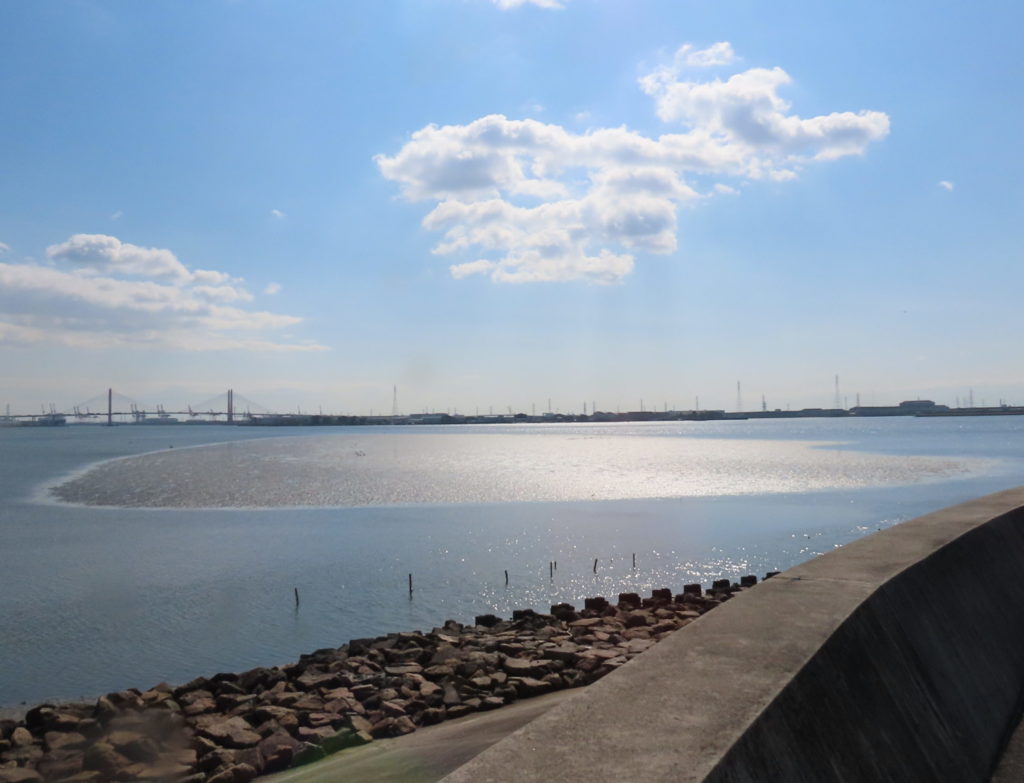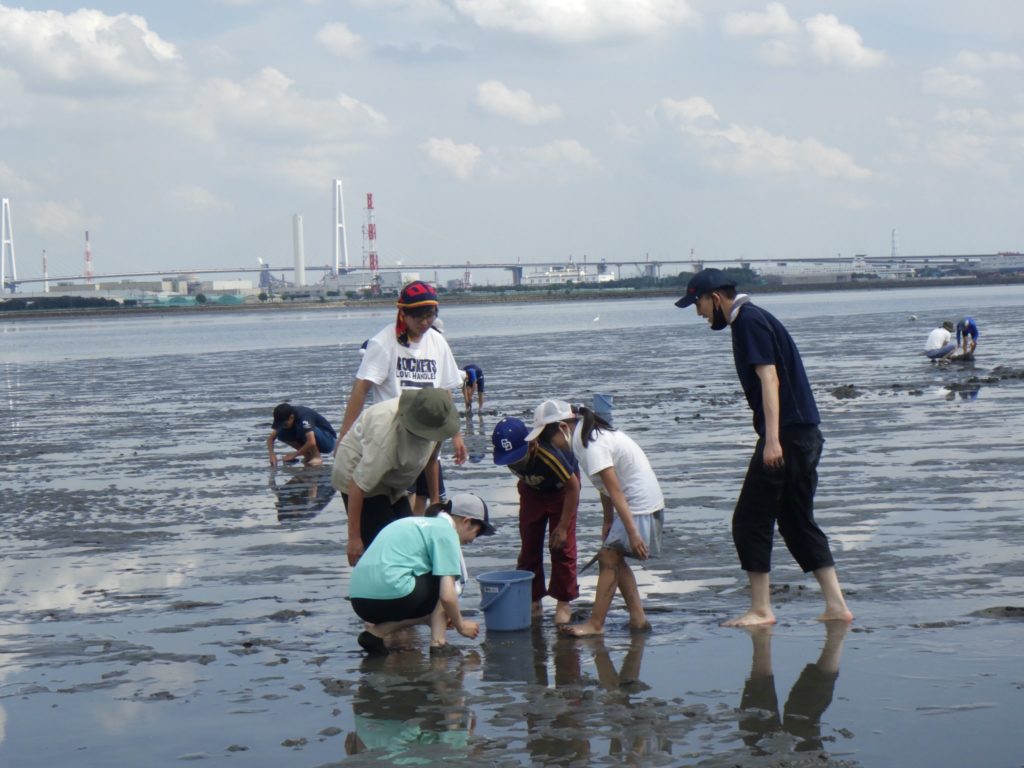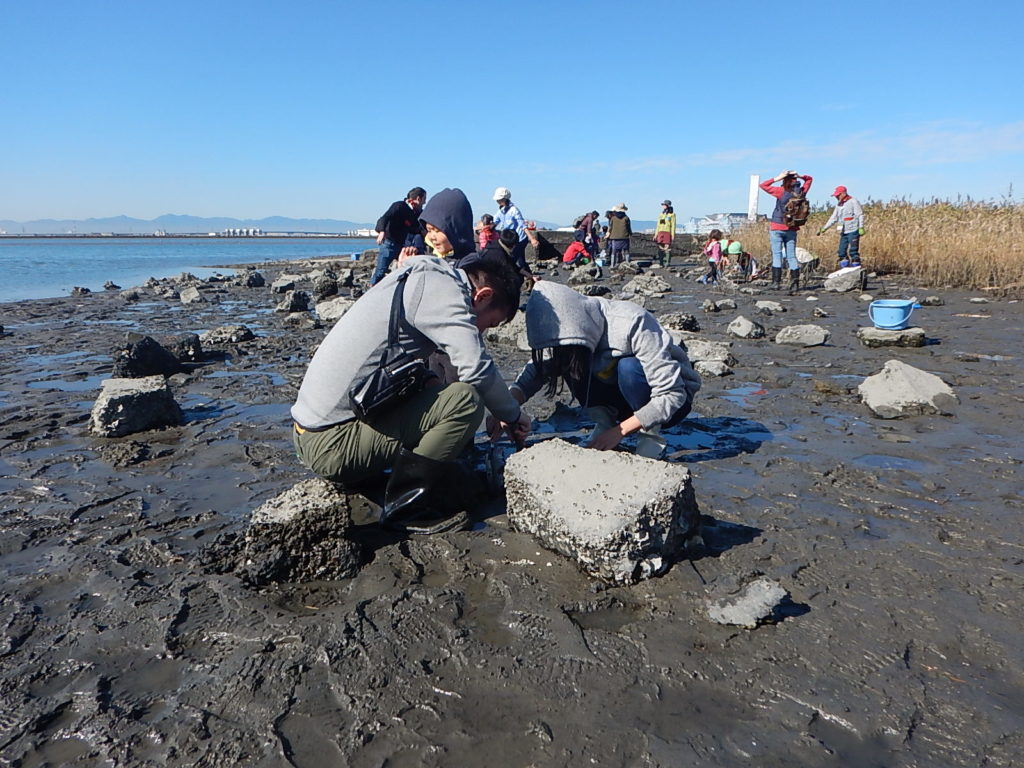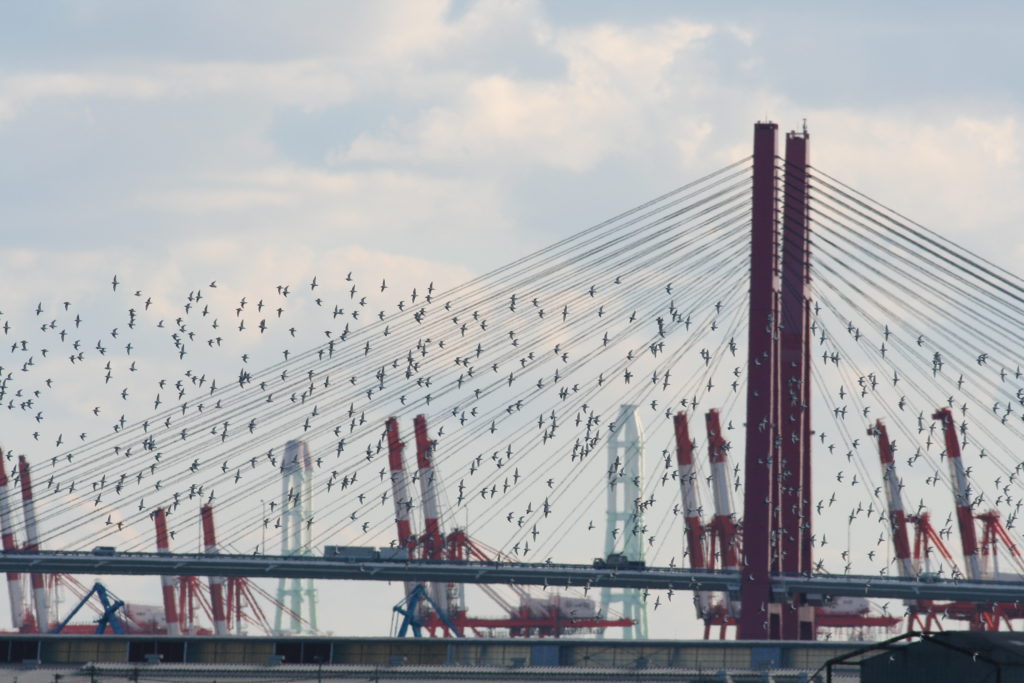
Spring
Shorebirds from the Southern Hemisphere stop by the Fujimae Tidal Flat to nourish themselves on their way to their breeding grounds in Siberia and Alaska in spring. We can watch migratory birds on the mudflats as the tide recedes. The surface of the water glistens and a gentle breeze blows. A rice ball (typical picnic food in Japan) tastes best when we are enjoying the sun.
Summer
While little terns are diving for small fish, we go looking for crabs on the rocky shore. Lift up a rock, and crabs swarm out. There are also clams, barnacles, anemones, and sea roaches among the rocks. If we choose a day with a spring tide and go out onto the mudflat, we can find hundreds of holes of various sizes on the surface. These are the burrows of gobies, mud shrimp and crabs. These lead to exciting encounters with different kinds of creatures.


Autumn
Sandpipers and plovers have raised their chicks in Siberia or Alaska, and they stop by at Fujimae Tidal Flat on their journey to the Southern Hemisphere. During this season, we also hold a clean-up campaign at Fujimae Tidal Flat. While picking up the trash, we look carefully at the kind of trash that washes ashore. That helps us understand more about our own way of life.
Winter
In winter, we watch birds that have come from Siberia. Floating ducks and flocks of dunlins can be seen at this time of year. From fall to the end of winter, the biggest mudflat only comes out in the middle of the night.

